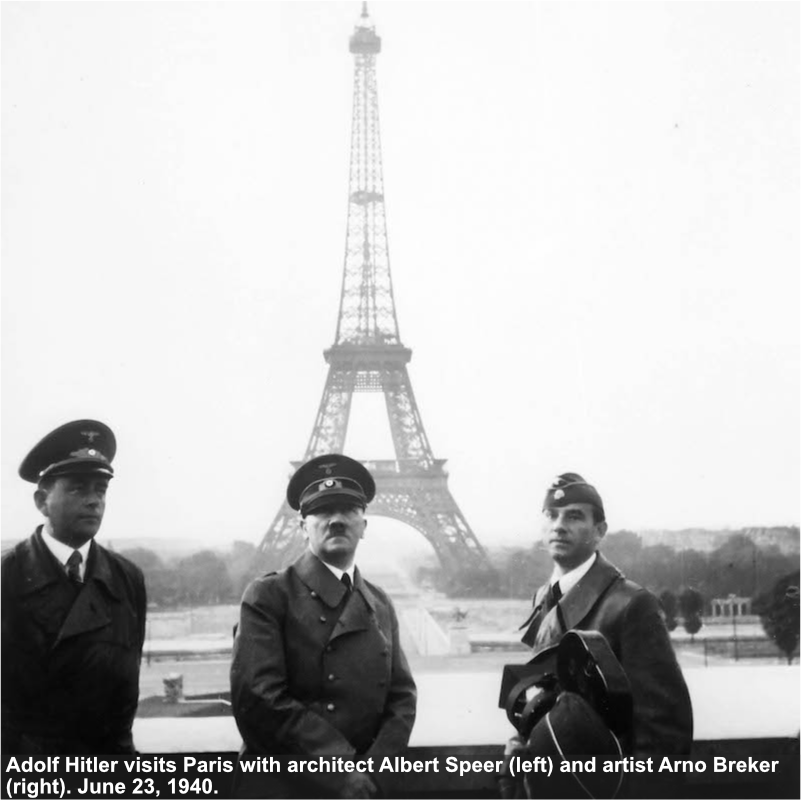Germany Conquers France
Episode #3 of the course Ten turning points of World War II by Patrick Allitt
Educated Europeans believed through the 1920s and 1930s that France was one of the world’s great powers. No wonder: France had emerged victorious from World War I, had imposed punitive sanctions on Germany at the Treaty of Versailles (1919), and held a worldwide colonial empire. It could mobilize an army of more than three million men, had more artillery and more tanks than Hitler, and had built a powerful defensive front, the Maginot Line, along its border with Germany.
Nevertheless, it was outmaneuvered, outfought, and humiliated by a smaller German force, which invaded on June 10, 1940. France’s resistance ended on July 22, just six weeks later. This was one of the two or three greatest upsets in the military history of the entire world.
Hitler’s first move was to bypass the Maginot Line by invading through the Ardennes Forest of Belgium. French commanders were astonished. German generals had developed “blitzkrieg” (lightning war) tactics, in which bold advances by fast-moving tanks, supported by dive bombers overhead, drove far into the enemy’s territory, destroyed command posts, disrupted communications, and demoralized the enemy. These tactics worked extremely well, especially as German tank crews were kept alert for 48 hours at a time with a form of methamphetamine.
The French, by contrast, used their tanks unimaginatively, as support for infantry. French forces moved slowly, their commanders disagreed about how to react to German advances, and there was a high level of mistrust between the generals and the politicians. The British Expeditionary Force, on hand in northern France since September 1939, proved equally ineffective. Its commander, Lord Gort, was a decorated hero of World War I, but the British War Minister described him as “utterly brainless, and unable to grasp the simplest problem.” In any event, he, along with his force, was soon in headlong retreat to the French coast, in danger of losing everything and everybody.
These were the days in which Winston Churchill replaced Neville Chamberlain as British prime minister. Churchill was one of few British politicians who, during the 1930s, had seen the magnitude of the threat Hitler represented. Scorned as an old imperialist and warmonger by most of his Conservative Party colleagues, he was now vindicated. He entered 10 Downing Street when the crisis was at its height, a moment vividly recreated by the recent movie, Darkest Hour.
As British troops massed on the beaches at Dunkirk, vulnerable to German dive-bombers, the Royal Navy mobilized not just its warships and transports, but also a great flotilla of small boats, many of them privately owned. Crossing the English Channel, they were used to pick up soldiers from the beaches and ferry them to deeper-draft vessels offshore. Seven of every eight British soldiers were evacuated in what was code-named, “Operation Dynamo,” but they were forced to leave behind nearly all their equipment, including more than 400 tanks, 65,000 other vehicles, and half a million tons of supplies and ammunition.
The French prime minister, Paul Reynaud, pleaded with Churchill to let him have more squadrons of British fighter planes, which had had some success in confronting German air power. Churchill, aware that Britain itself lay under imminent threat of invasion, said no. He did offer, however, to turn Britain and France into one united country, in the face of an unprecedented threat to them both. This quixotic possibility was never realized.
Reynaud resigned, and his successor, Philippe Pétain, quickly surrendered to Hitler. The armistice was signed, symbolically, in Compiègne, where Germany had been forced to sign its own cease-fire back in 1918. The same railway carriage was used for the occasion. France was then partitioned, the North to be administered directly by Germany, while the South was run by a collaborationist French regime under Pétain.
One French general who managed to join the evacuation to Britain was Charles de Gaulle. From his London headquarters, he became the focal point of the free French forces that set themselves the task of joining the Allies to liberate their country.
Tomorrow, we will take up the story as Britain itself faced invasion by the triumphant Nazi armies. The Battle of Britain, in the late summer of 1940, was the biggest aerial battle in world history up to that time. It marked the first time that German aggression was effectively checked.
Recommended book
Their Finest Hour by Winston Churchill
Share with friends

